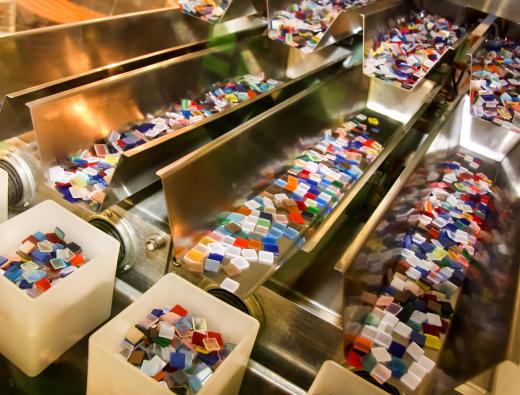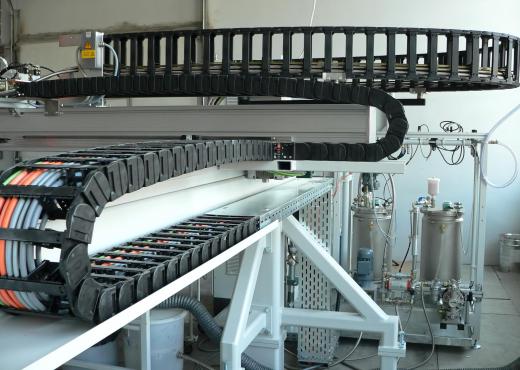At AboutMechanics, we're committed to delivering accurate, trustworthy information. Our expert-authored content is rigorously fact-checked and sourced from credible authorities. Discover how we uphold the highest standards in providing you with reliable knowledge.
What Is a Conveyor Idler?
A conveyor idler is a small round part of a conveyor belt that is similar to a gear or pulley. Pulleys and idlers are very similar items. In general, the idler is designated as a pulley that does not bear a primary load, or primarily drive a motor or component of a conveyor system. Some explain the idler as a kind of “dummy” pulley, an extra wheel that serves only minor functions in a conveyor setup.
Generally, a conveyor idler serves to help move the belt along, or provides specific amounts of resistance within a belt and pulley structure. Idlers can also help with gear ratio and other engineering aspects of a conveyor belt system. In some cases, conveyor idler models may have belt tensioner features, where moving the idler can change the tension on the belt. These will usually come with detailed instructions, since some of them can be hard to use because of necessary tools or unusual specifications.

As a useful part of many industrial systems, conveyor idlers come in many different forms. Some common ones are inline idlers, inset or offset idlers, and return idlers. Inline, inset, and offset varieties are built in very specific ways to accommodate the belt according to optimal factors. Return idlers often deal with the undercarriage of the belt, which moves in the reverse direction. They can help to control aspects of belt return that contributes to the general function of the conveyor belt, such as the width or tension between the top belt and the return.

Many specific conveyor idler designs are composed of more than one roller, where various parts of the idler connect to the conveyor belt at different points to keep the belt properly routed and operating well. These designs can also include metal racks for stability. Some designs have handles that can be used to adjust the idler to help a conveyor move correctly. All of this leads to structural versatility for fitting these elements into an existing industrial conveyor system.
In many different kinds of manufacturing and production environments, conveyor idlers serve specific engineering purposes within a moving belt design. They can be designed to handle various loads according to what often moves across the conveyor space. They can also be built to interact with safety and emergency systems that will help to protect workers and the equipment used in the conveyor belt assembly.
AS FEATURED ON:
AS FEATURED ON:












Discuss this Article
Post your comments